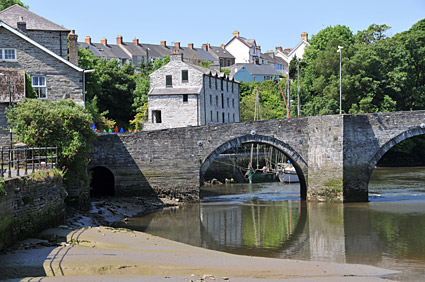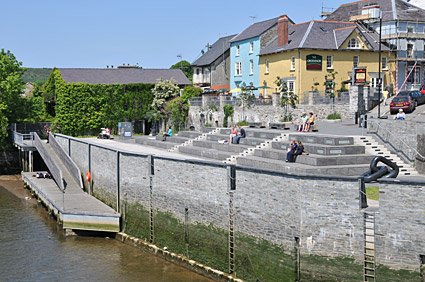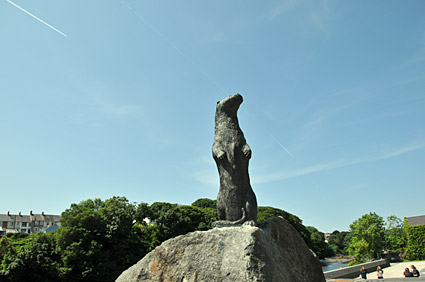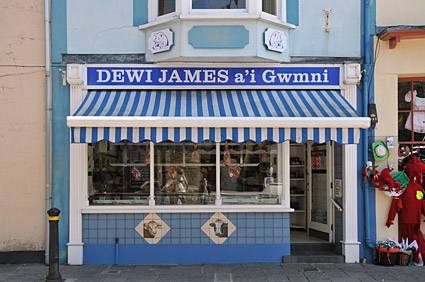|
Cardigan (Aberteifi), west Wales (part 1)
Town on the river Teifi where Ceredigion meets Pembrokeshire.
(Photos © urban75, June 2009)
The country town of Cardiganshire before the 1974 reorganisation, Cardigan is an attractive rural town of around 4,000 inhabitants, and sits on the estuary of the River Teifi where Ceredigion meets Pembrokeshire.
Founded in 1093 by the Norman Roger de Montgomery, Cardigan was battled over for centuries. In the 12th century, Rhys ap Gruffydd - head honcho of the kingdom of Deheubarth - repeatedly had a pop at the Normans before successfully taking control in 1165.
Gruffydd rebuilt the castle in stone in 1171 and the first National Eisteddfod of Wales was held in the town five years later.
The Normans grabbed the castle back by the mid 13th century, adding a new stone town wall in the bargain. The castle saw action again during the English Civil War, when it was attacked by parliamentary forces.
A port since the Early Middle Ages, Cardigan had become second only to Milford Haven as the most important port in Wales by Elizabethan times, supporting a small shipbuilding industry (and supporting rope and sail making businesses) by the 17th century.
By the early 19th century, the town was home to over 300 sailing vessels, with 1,000 men registered at the port and the five local shipyards producing more than 200 ships.
Slate from Cilgerran slate was exported from the port until the river silted up by the early part of the twentieth century.

Looking across the river from the approach to the town via the old railway track path.

The 17th century five-arch stone bridge that spans the Teifi.



Old pub sign for the Castle Inn, right next to the bridge.



Guarding the bridge is Cardigan Castle, which hosted the first competitive Eisteddfod in 1176 (the town went on to host the National Eisteddfod of Wales in 1942 and 1976.)
After years in private hands the castle has became run down and derelict, and it was ony after a local campaign did Ceredigion County Council finally buy it in 2003. It's still not open to the public.

The quayside was rebuilt in 2006/2007, with a new civic area and landing stage added.

Otter sculpture.

Glorious June sunshine on the wharf.



The Castle Cafe with it's Cellar Bar reckoned to be the best place in Cardigan for live music.

Dewi James Butchers on the High Street.

Popty Fedwen - bakers on the High Street.

The Saddlers Arms, Cardigan, first appearing in the 1839 census as being owned by a David Jones, publican and saddler.
In 1884, the pub was sold to Mrs Mathias for £500.

Cardigan Guild Hall, a fine example of the High Victorian Movement in Architecture. Built in 1858 and employing polychromatic stone, the building backs on to the upper market.
The clock and tower were added in 1896.
« Wales photos home Cardigan photos 2 »
|
|
















